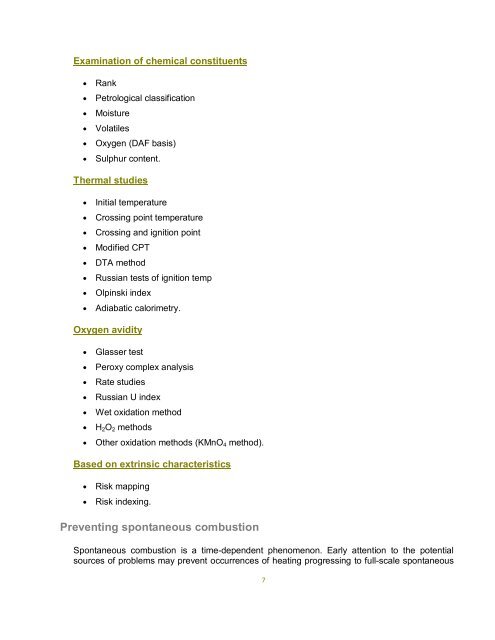prevention and control of spontaneous combustion - Mining and
prevention and control of spontaneous combustion - Mining and
prevention and control of spontaneous combustion - Mining and
Create successful ePaper yourself
Turn your PDF publications into a flip-book with our unique Google optimized e-Paper software.
Examination <strong>of</strong> chemical constituents<br />
• Rank<br />
• Petrological classification<br />
• Moisture<br />
• Volatiles<br />
• Oxygen (DAF basis)<br />
• Sulphur content.<br />
Thermal studies<br />
• Initial temperature<br />
• Crossing point temperature<br />
• Crossing <strong>and</strong> ignition point<br />
• Modified CPT<br />
• DTA method<br />
• Russian tests <strong>of</strong> ignition temp<br />
• Olpinski index<br />
• Adiabatic calorimetry.<br />
Oxygen avidity<br />
• Glasser test<br />
• Peroxy complex analysis<br />
• Rate studies<br />
• Russian U index<br />
• Wet oxidation method<br />
• H2O2 methods<br />
• Other oxidation methods (KMnO4 method).<br />
Based on extrinsic characteristics<br />
• Risk mapping<br />
• Risk indexing.<br />
Preventing <strong>spontaneous</strong> <strong>combustion</strong><br />
Spontaneous <strong>combustion</strong> is a time-dependent phenomenon. Early attention to the potential<br />
sources <strong>of</strong> problems may prevent occurrences <strong>of</strong> heating progressing to full-scale <strong>spontaneous</strong><br />
7

















